Short-Pulse-Width Repetitively Q-Switched ~2.7-μm Er:Y2O3 Ceramic Laser
Abstract
:1. Introduction
2. Experimental Details
3. Results
4. Conclusions
Acknowledgments
Author Contributions
Conflicts of Interest
References
- Guidotti, R.; Merigo, E.; Fornaini, C.; Rocca, J.P.; Medioni, E.; Vescovi, P. Er:YAG 2,940-nm laser fiber in endodontic treatment: A help in removing smear layer. Lasers Med. Sci. 2014, 29, 69–75. [Google Scholar] [CrossRef] [PubMed]
- Zhao, Y.; Yin, Y.; Tao, L.; Nie, P.; Tang, Y.; Zhu, M. Er:YAG laser versus scaling and root planing as alternative or adjuvant for chronic periodontitis treatment: A systematic review. J. Clin. Periodontol. 2014, 41, 1069–1079. [Google Scholar] [CrossRef] [PubMed]
- Ayerden, N.P.; Mandon, J.; Ghaderi, M.; Harren, F.J.; Wolffenbuttel, R.F. A photonic microsystem for hydrocarbon gas analysis by mid-infrared absorption spectroscopy. In Proceedings of the 2017 IEEE 30th International Conference on Micro Electro Mechanical Systems (MEMS), Las Vegas, NV, USA, 22–26 January 2017; pp. 1052–1055. [Google Scholar]
- Gauthier, J.C.; Fortin, V.; Carree, J.Y.; Poulain, S.; Poulain, M.; Vallee, R.; Bernier, M. Mid-IR supercontinuum from 2.4 to 5.4 μm in a low-loss fluoroindate fiber. Opt. Lett. 2016, 41, 1756–1759. [Google Scholar] [CrossRef] [PubMed]
- Robichaud, L.R.; Fortin, V.; Gauthier, J.C.; Chatigny, S.; Couillard, J.F.; Delarosbil, J.L.; Vallee, R.; Bernier, M. Compact 3–8 μm supercontinuum generation in a low-loss As2Se3 step-index fiber. Opt. Lett. 2016, 41, 4605–4608. [Google Scholar] [CrossRef] [PubMed]
- Vodopyanov, K.L.; Makasyuk, I.; Schunemann, P.G. Grating tunable 4–14 µm GaAs optical parametric oscillator pumped at 3 µm. Opt. Express 2014, 22, 4131–4136. [Google Scholar] [CrossRef] [PubMed]
- Frolov, M.P.; Korostelin, Y.V.; Kozlovsky, V.I.; Podmar’kov, Y.P.; Savinova, S.A.; Skasyrsky, Y.K. 3 J pulsed Fe:ZnS laser tunable from 3.44 to 4.19 μm. Laser Phys. Lett. 2015, 12, 055001. [Google Scholar] [CrossRef]
- Zajac, A.; Skorczakowski, M.; Swiderski, J.; Nyga, P. Electrooptically Q-switched mid-infrared Er:YAG laser for medical applications. Opt. Express 2004, 12, 5125–5130. [Google Scholar] [CrossRef] [PubMed]
- Högele, A.; Hörbe, G.; Lubatschowski, H.; Welling, H.; Ertmer, W. 2.70 μm CrEr:YSGG laser with high output energy and FTIR-Q-switch. Opt. Commun. 1996, 125, 90–94. [Google Scholar] [CrossRef]
- Maak, P.; Jakab, L.; Richter, P.; Eichler, H.J.; Liu, B. Efficient acousto-optic Q switching of Er:YSGG lasers at 2.79-µm wavelength. Appl. Opt. 2000, 39, 3053–3059. [Google Scholar] [CrossRef] [PubMed]
- Wyss, C.H.R.; Luthy, W.; Weber, H.P. Modulation and single-spike switching of a diode-pumped Er3+:LiYF4 laser at 2.8 μm. IEEE J. Quantum Electron. 1998, 34, 1041–1045. [Google Scholar] [CrossRef]
- Qin, Z.; Xie, G.; Zhang, H.; Zhao, C.; Yuan, P.; Wen, S.; Qian, L. Black phosphorus as saturable absorber for the Q-switched Er:ZBLAN fiber laser at 2.8 μm. Opt. Express 2015, 23, 24714–24718. [Google Scholar] [CrossRef] [PubMed]
- Shen, Y.; Wang, Y.; Luan, K.; Huang, K.; Tao, M.; Chen, H.; Yi, A.; Feng, G.; Si, J. Watt-level passively Q-switched heavily Er3+-doped ZBLAN fiber laser with a semiconductor saturable absorber mirror. Sci. Rep. 2016, 6, 26659. [Google Scholar] [CrossRef] [PubMed]
- Qiao, X.B.; Huang, H.T.; Yang, H.; Zhang, L.; Wang, L.; Shen, D.Y.; Zhang, J.; Tang, D.Y. Fabrication, optical properties and LD-pumped 2.7 μm laser performance of low Er3+ concentration doped Lu2O3 transparent ceramics. J. Alloys Compd. 2015, 640, 51–55. [Google Scholar] [CrossRef]
- Sanamyan, T. Diode pumped cascade Er:Y2O3 laser. Laser Phys. Lett. 2015, 12, 125804. [Google Scholar] [CrossRef]
- Krankel, C. Rare-Earth-Doped Sesquioxides for Diode-Pumped High-Power Lasers in the 1-, 2-, and 3-μm Spectral Range. IEEE J. Sel. Top. Quantum Electron. 2015, 21, 1602013. [Google Scholar] [CrossRef]
- Sanamyan, T.; Simmons, J.; Dubinskii, M. Er3+-doped Y2O3 ceramic laser at ~2.7 µm with direct diode pumping of the upper laser level. Laser Phys. Lett. 2010, 7, 206–209. [Google Scholar] [CrossRef]
- Ikesue, A.; Aung, Y.L. Ceramic laser materials. Nat. Photonics 2008, 2, 721–727. [Google Scholar] [CrossRef]
- Kong, L.C.; Qin, Z.P.; Xie, G.Q.; Guo, Z.N.; Zhang, H.; Yuan, P.; Qian, L.J. Black phosphorus as broadband saturable absorber for pulsed lasers from 1 μm to 2.7 μm wavelength. Laser Phys. Lett. 2016, 13, 045801. [Google Scholar] [CrossRef]
- Ren, X.J.; Wang, Y.; Fan, X.L.; Zhang, J.; Tang, D.Y.; Shen, D.Y. High-peak-power acousto-optically Q-switched Er:Y2O3 ceramic laser at ~2.7 μm. IEEE Photonics J. 2017, 9, 1–6. [Google Scholar] [CrossRef]
- Skórczakowski, M.; Pichola, W.; Šwiderski, J.; Nyga, P.; Galecki, L.; Maciejewska, M.; Kasprzak, J. 30 mJ, TEM00, high repetition rate, mechanically Q-switched Er:YAG laser operating at 2940 nm. Opto-Electron. Rev. 2011, 19, 206–210. [Google Scholar] [CrossRef]
- Murphy, F.J.; Arbabzadah, E.A.; Bak, A.O.; Amrania, H.; Damzen, M.J.; Phillips, C.C. Optical chopper Q-switching for flashlamp-pumped Er,Cr:YSGG lasers. Laser Phys. Lett. 2015, 12, 045802. [Google Scholar] [CrossRef]
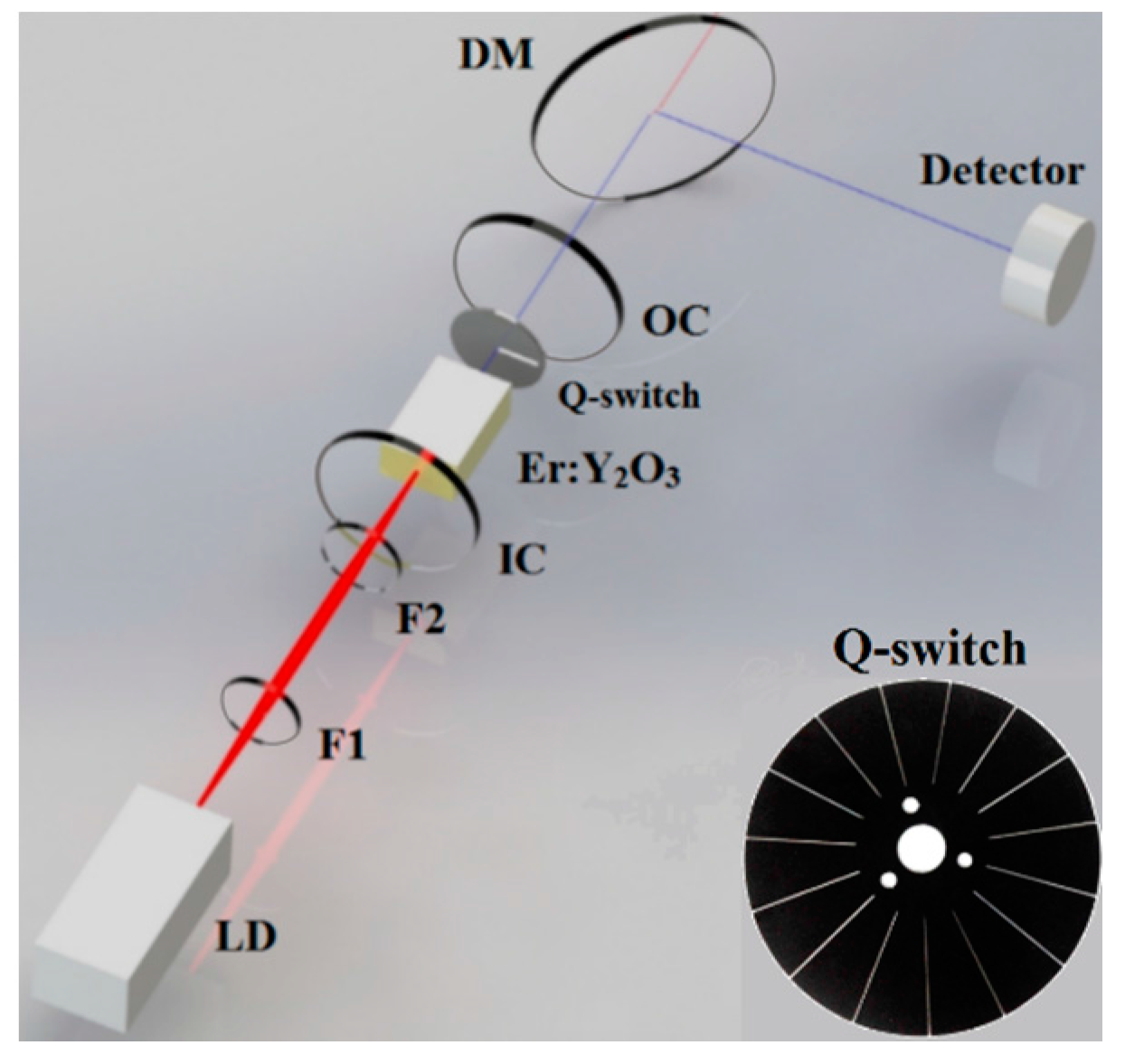
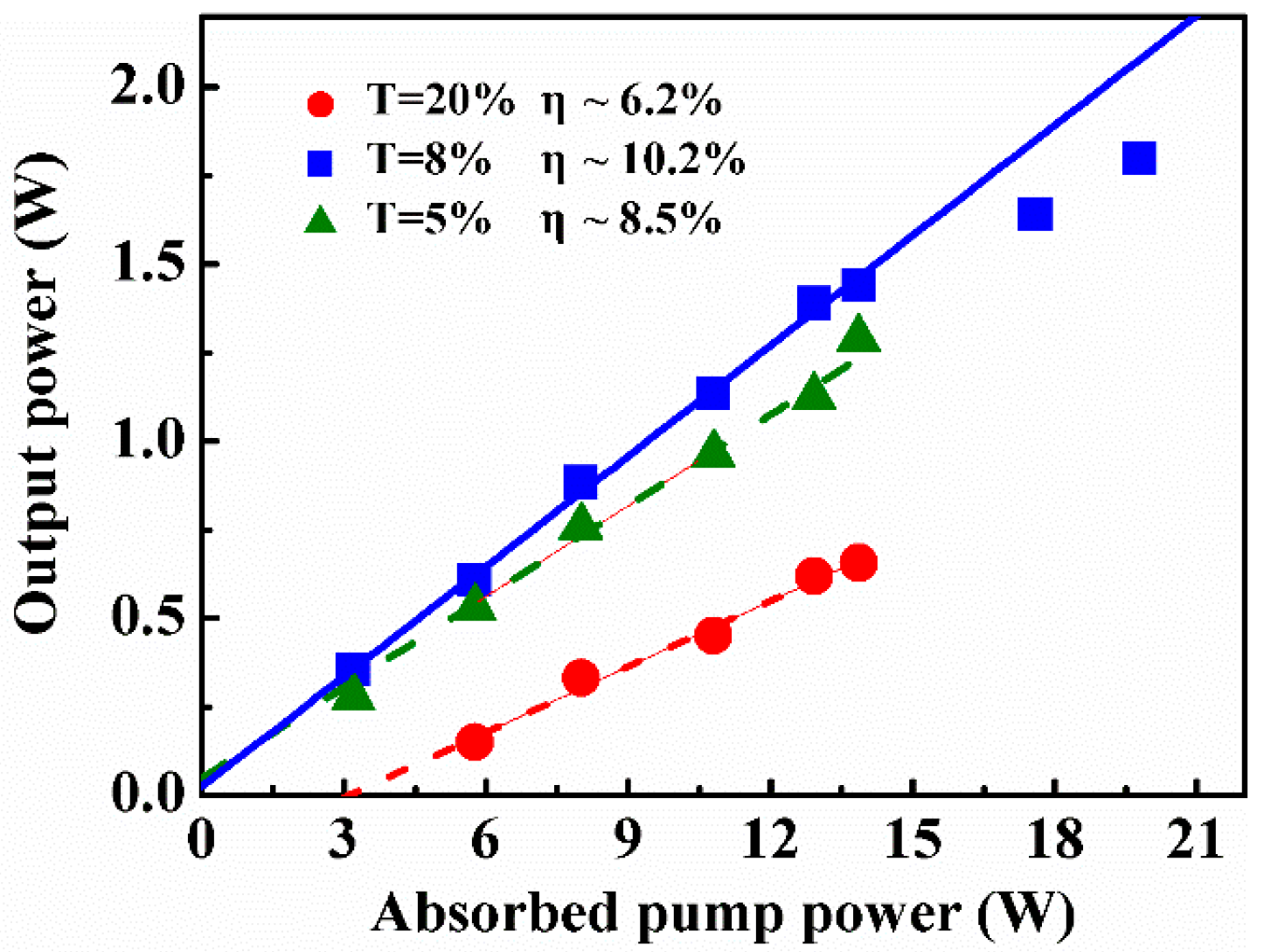
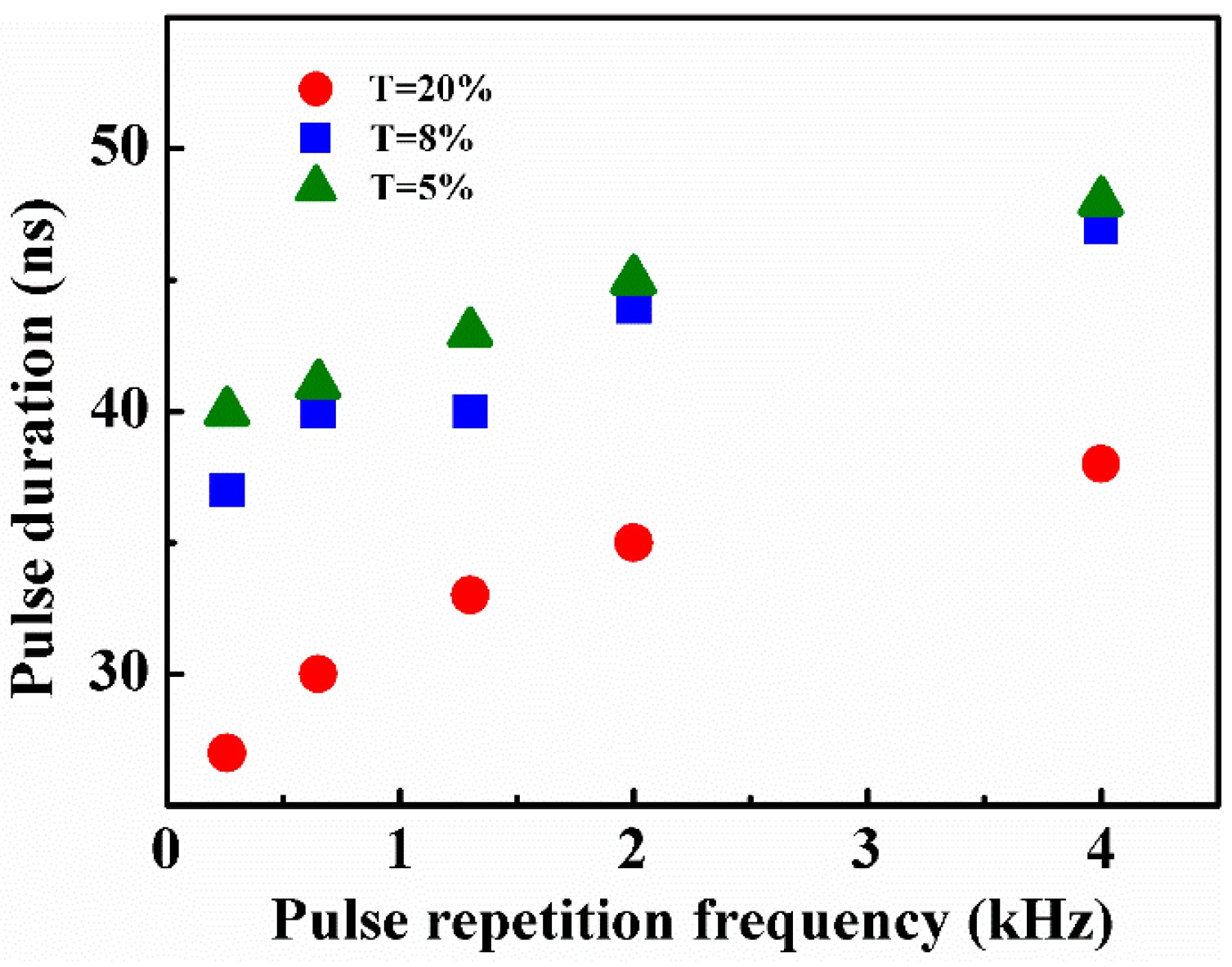

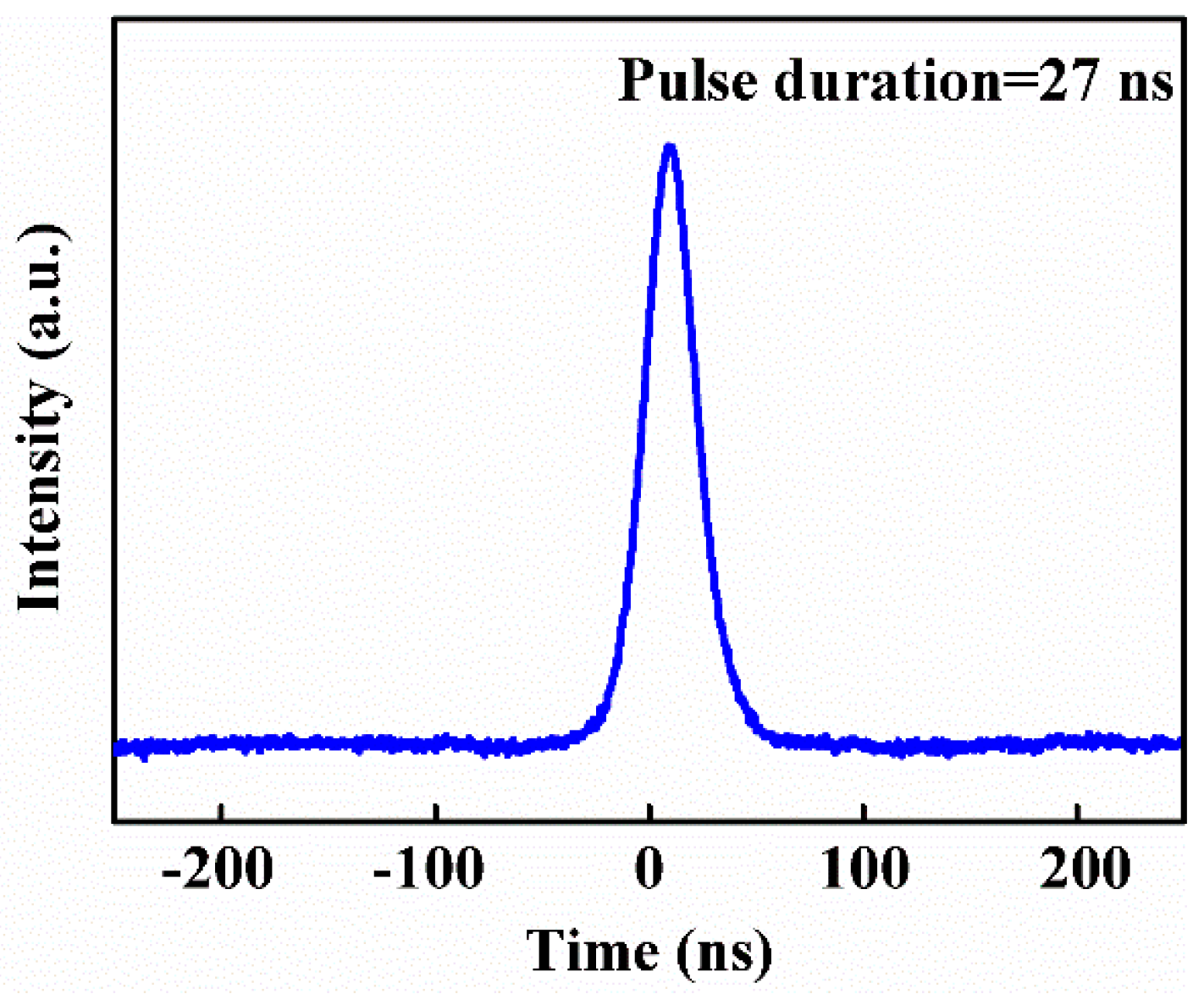
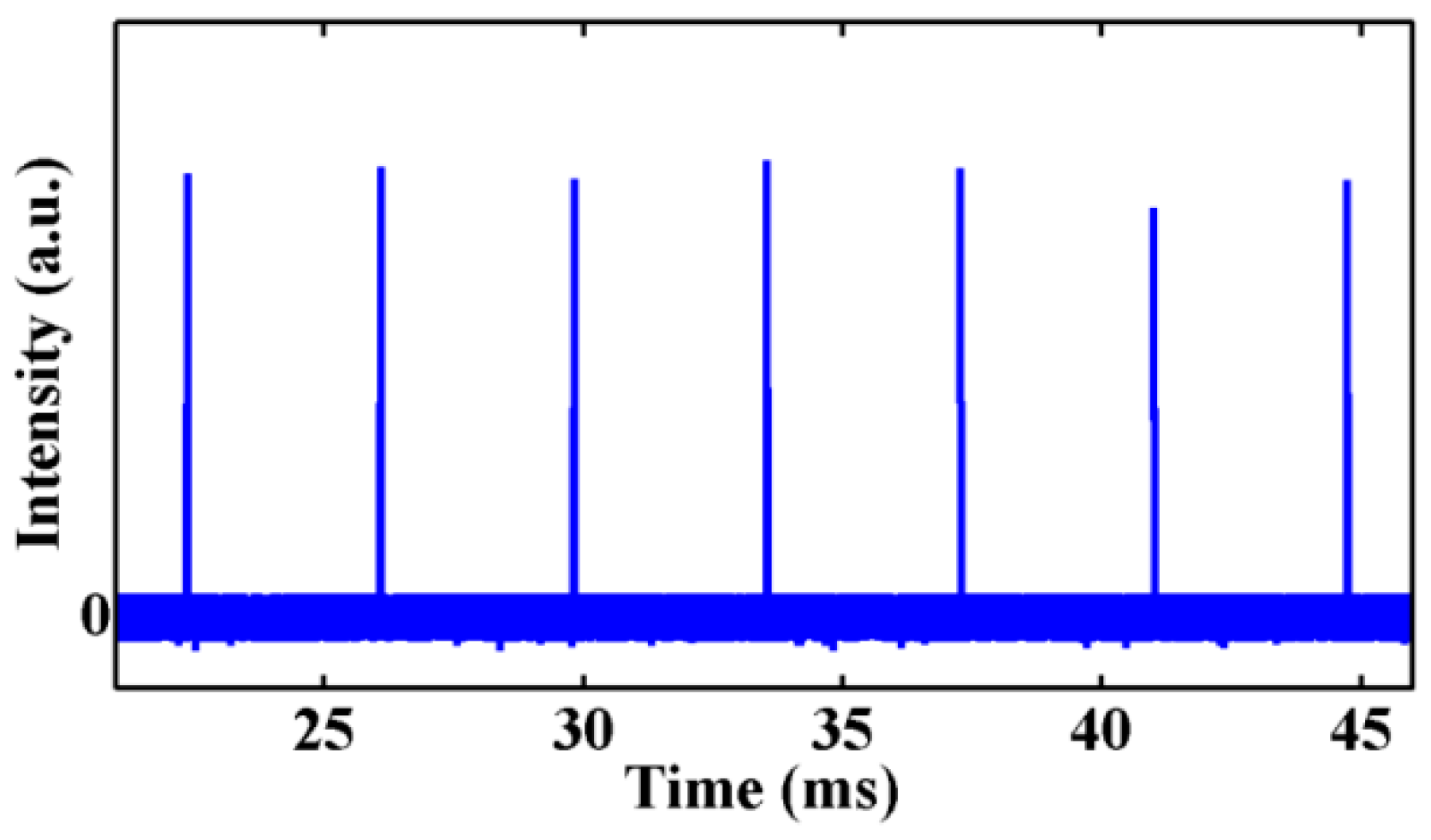
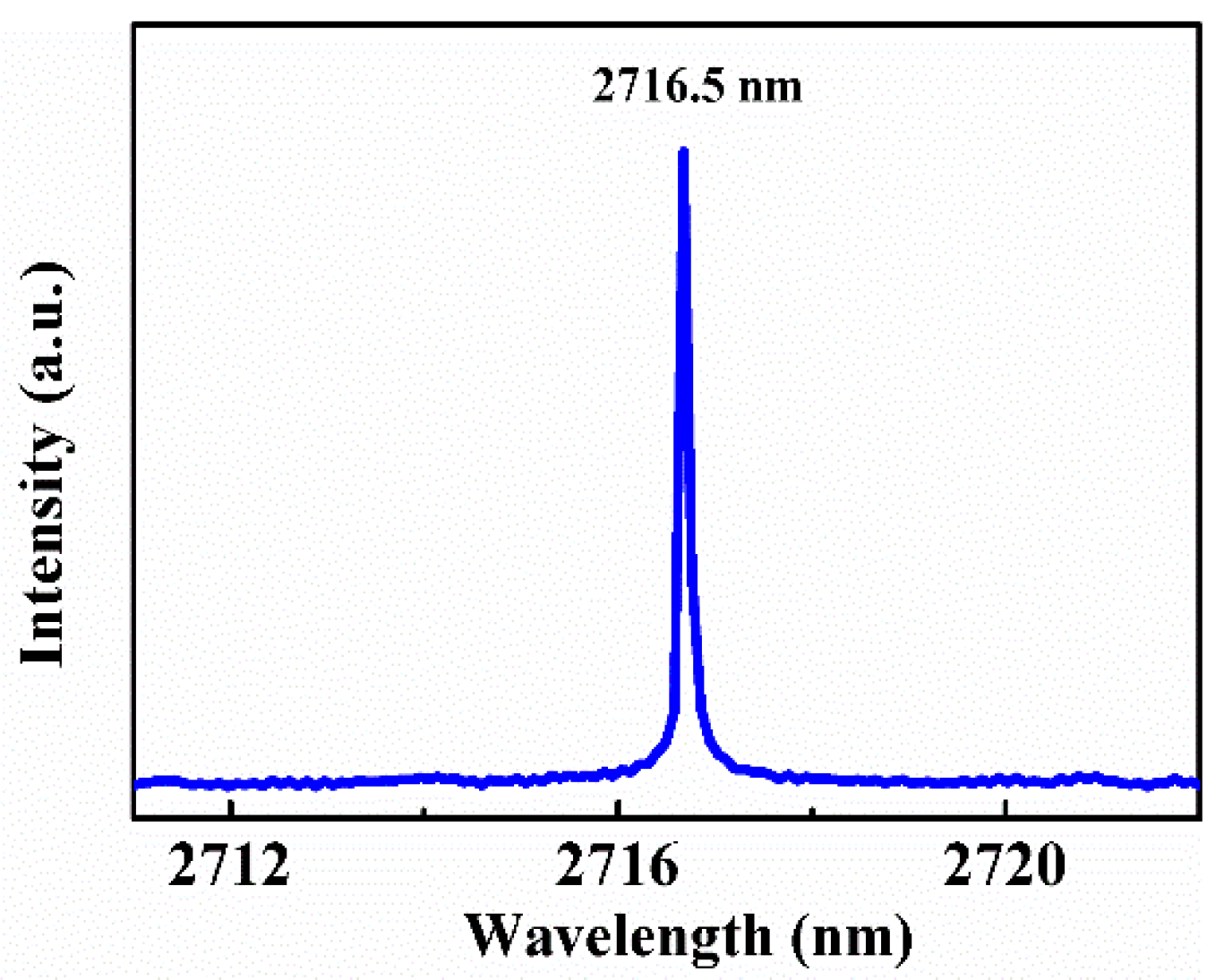
© 2017 by the authors. Licensee MDPI, Basel, Switzerland. This article is an open access article distributed under the terms and conditions of the Creative Commons Attribution (CC BY) license (http://creativecommons.org/licenses/by/4.0/).
Share and Cite
Ren, X.; Wang, Y.; Zhang, J.; Tang, D.; Shen, D. Short-Pulse-Width Repetitively Q-Switched ~2.7-μm Er:Y2O3 Ceramic Laser. Appl. Sci. 2017, 7, 1201. https://doi.org/10.3390/app7111201
Ren X, Wang Y, Zhang J, Tang D, Shen D. Short-Pulse-Width Repetitively Q-Switched ~2.7-μm Er:Y2O3 Ceramic Laser. Applied Sciences. 2017; 7(11):1201. https://doi.org/10.3390/app7111201
Chicago/Turabian StyleRen, Xiaojing, Yong Wang, Jian Zhang, Dingyuan Tang, and Deyuan Shen. 2017. "Short-Pulse-Width Repetitively Q-Switched ~2.7-μm Er:Y2O3 Ceramic Laser" Applied Sciences 7, no. 11: 1201. https://doi.org/10.3390/app7111201
APA StyleRen, X., Wang, Y., Zhang, J., Tang, D., & Shen, D. (2017). Short-Pulse-Width Repetitively Q-Switched ~2.7-μm Er:Y2O3 Ceramic Laser. Applied Sciences, 7(11), 1201. https://doi.org/10.3390/app7111201



